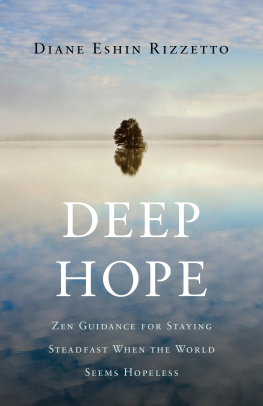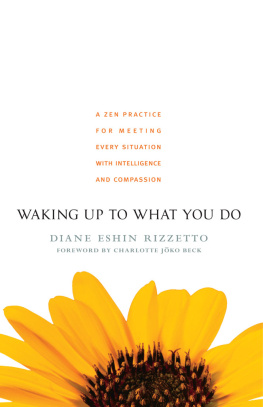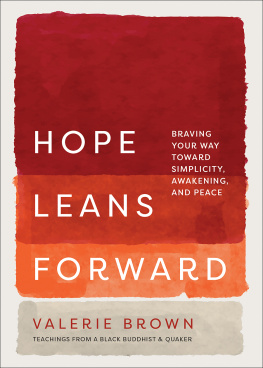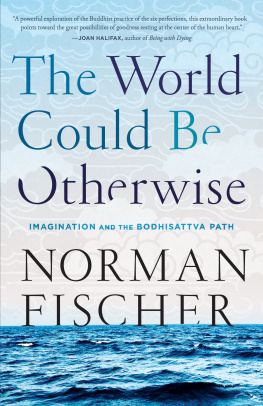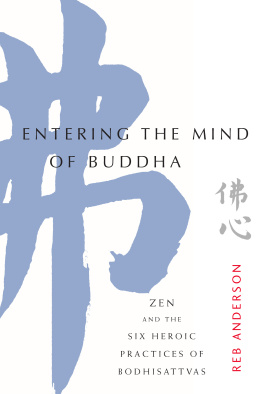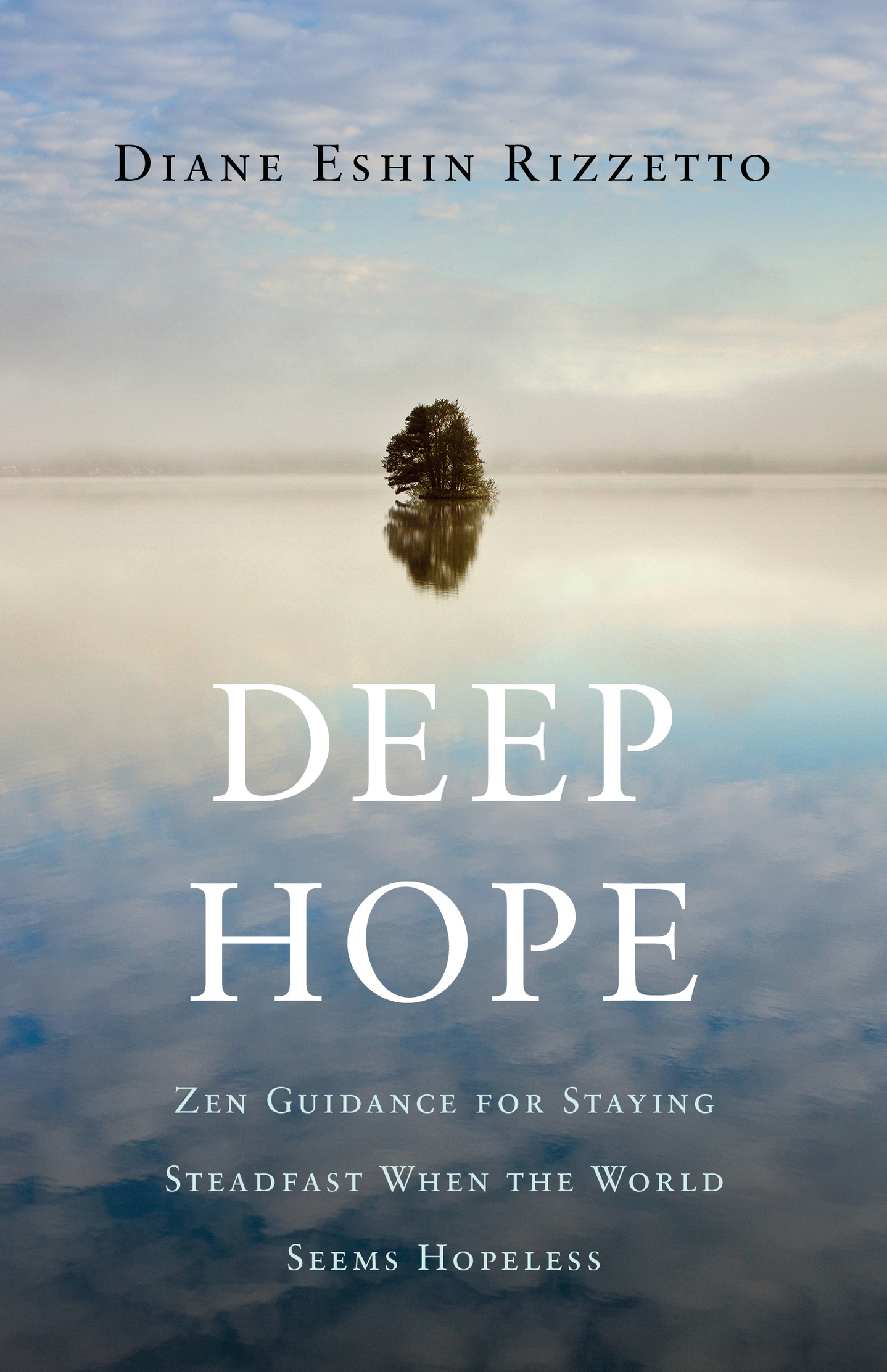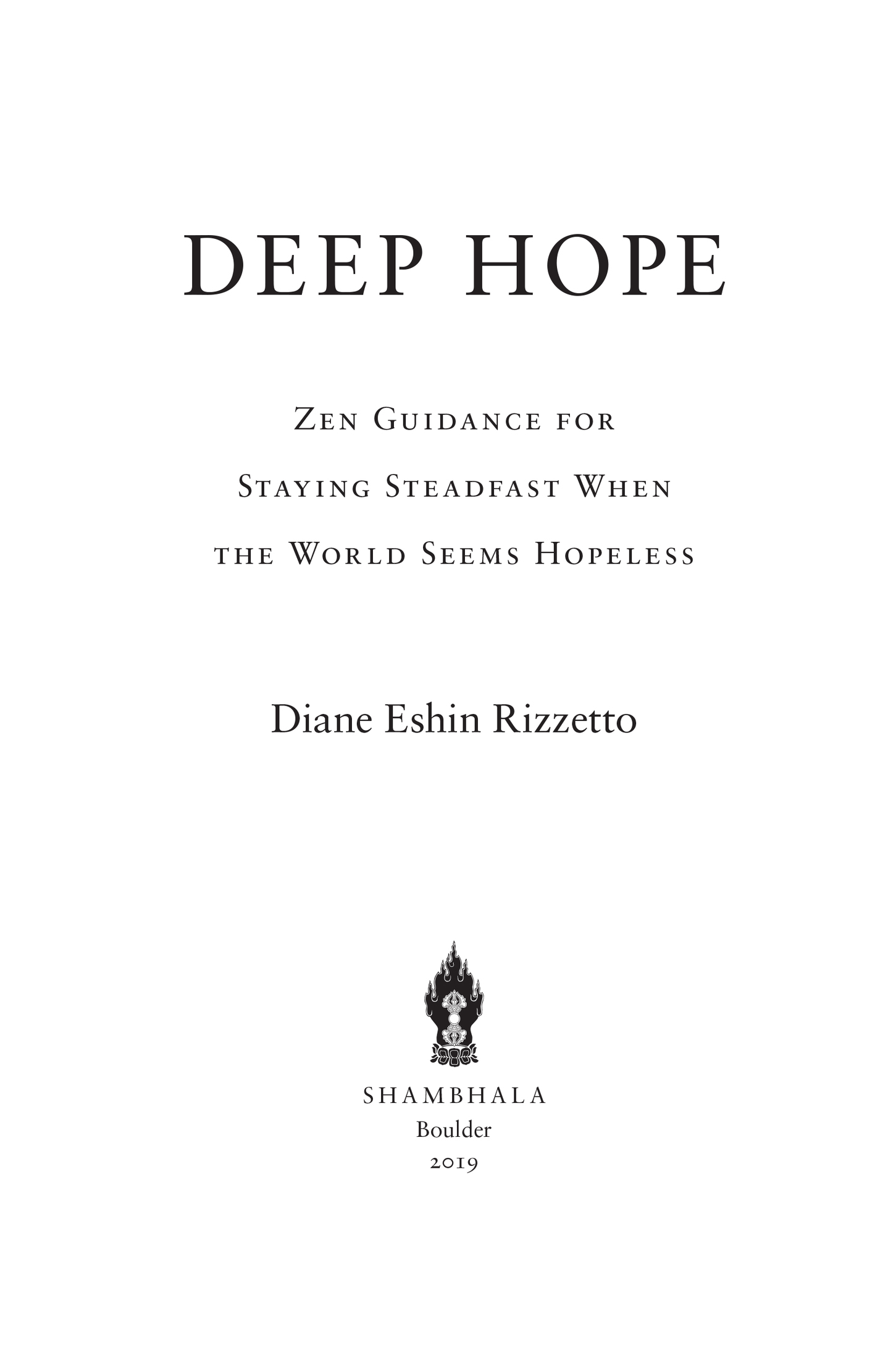Contents
Landmarks
Print Page List
Diane Eshin Rizzetto does not really tell us about hope or about living a life that gives us hope; instead, she shows us how to find in ourselves the resources of a life of hope. And she does this by skillfully blending the teachings of the paramitas with actual practices and personal explorations that reveal the wisdom and power of these ancient teachings. By turning toward our own experience of the paramitas, we readers are offered a startling path through these dark times when hope is sorely needed.
Roshi Pat Enkyo OHara, author of Most Intimate: A Zen Approach to Lifes Challenges
Diane Rizzettos Deep Hope is an inspirational guidebook grounded in the six perfections teachings of Buddhism and leavened by her contemporary and practical style of Zen wisdom. The book reenvisions hope as a foundational approach to living based on the energy of life itself. Each chapter is filled with pithy stories, teachings, student questions, and practices, which together offer readers a rich toolset to approach the deepest challenges of lifeespecially how to remain positive and engaged in todays confused and conflict-weary world. Society needs this book and will benefit in myriad ways from its timely wisdom.
Lewis Richmond, author of Aging as a Spiritual Practice
Deep Hope is the very thing we need in days when despair is close at hand. With wisdom, eloquence, and ordinary words, Diane Eshin Rizzetto helps us see that enlightenment is an activity and that deep hope can be catalyzed by Buddhist practices of perfection, the six paramitas. These straightforward practices take us within and beyond ourselves to the shore of liberation. Deep Hope offers a clear map of the way.
Hozan Alan Senauke, vice-abbot, Berkeley Zen Center, and author of The Bodhisattvas Embrace
Shambhala Publications, Inc.
4720 Walnut Street
Boulder, Colorado 80301
www.shambhala.com
2019 by Diane Eshin Rizzetto
Much of the material in chapter 3, Taking Skillful Action, is adapted from the authors previous book
Waking Up to What You Do (Boston: Shambhala, 2006).
All rights reserved. No part of this book may be reproduced in any form or by any means, electronic or mechanical, including photocopying, recording, or by any information storage and retrieval system, without permission in writing from the publisher.
Ebook design adapted from printed book design by Greta D. Sibley
Photo credit: Plattform/Getty Images
Cover design by Graciela Galup
Library of Congress Cataloging-in-Publication Data
NAMES: Rizzetto, Diane Eshin, author.
TITLE : Deep hope: Zen guidance for staying steadfast when the world seems hopeless / Diane Eshin Rizzetto.
DESCRIPTION : First Edition. | Boulder: Shambhala, 2019.
| Includes bibliographical references.
IDENTIFIERS : LCCN 2018026744 | ISBN 9781611804775 (pbk.: alk. paper)
eISBN 9780834842236
SUBJECTS : LCSH : Paramitas (Buddhism)
CLASSIFICATION : LCC BQ 4336 . R 59 2019 | DDC 294.3/444dc23
LC record available at https://lccn.loc.gov/2018026744
v5.4
a
C ONTENTS
A CKNOWLEDGMENTS
A PPRECIATION TO my teachers and students with whom I have been blessed to share this winding path of Zen practice. I also thank Barbara Gates, whose guidance helped me birth this book by guiding my words from thoughts to paper, and Diana Limbach Lempel, who offered clear and perceptive feedback on the early stages of the manuscript. And special thanks to Dave ONeal, whose support has been a source of great encouragement through the years. Finally, my deep appreciation to my children, grandchildren, great grandchildren, and to my husband, Jay, for his love and support.
I NTRODUCTION
E VERY DAY we receive news of cruelty and pain around the world. Its not easy to escape the knowledge of the suffering people are inflicting on other people, whether on our own block, in our own town, or across the world. The reality that we live in a world filled with danger and uncertainty seems to greet many of us when we wake each day. And the abundance of instant news and social media makes certain that we are immediately informed of the latest catastrophesbombings, killings, natural disasters, abusive and unstable governments, and on and on. Anger, divisiveness, cruelty, fear, and hopelessness seem to be at the forefront of human affairs around the world.
And yet, sitting with my cup of tea each morning as I read the newspaper, I am struck by the contradictory behavior among people. On the one hand, there is much evidence of violence and division, and, on the other hand, a disaster such as an earthquake, flood, or terrorist attack can kick us into an immediate response to help others. In a split second, all that seems to separate usskin color, religion, nationalityfalls away, and we give of ourselves completely as our awareness turns toward the present moment and what needs to be done. There is plenty of evidence that we are capable of turning our efforts to meet the reality of what is, of taking compassionate action because it is the right thing to do.
Yet, as we go about our daily lives, we can easily lose touch with this fundamental human capacity to bridge our perceived separations and connect with others, and thus we isolate ourselves, planting seeds of suffering for ourselves and others. And it seems the more terror and pain we experience, the stronger our fear and our desire to protect ourselves and our loved ones become. So, we may find that we become more selective about what and who we will let into our awareness. We may tend to hold back, hold in, and enclose ourselves in a tight circle of protection in the mistaken assumption that such a circumstance and state of mind make us safe. Sadly, we often dont even know were closing ourselves off from the richness of all that truly supports and sustains us. And because we do so, we open the path to fear, anger, despair, and hopelessness.
This book offers a different path, a different way to meet and engage in the reality of the world in which we live. It offers a path to reveal our deepest human capacity to give and receive, to patiently bear witness to whatever is arising in the moment, to take skillful action based on clarity and wisdom, to persevere with fortitude, and to rest in the silent stillness of each breath. In this way, it offers us not a path to deep hope, but a way to engage through deep hope.
Hope Is a Journey, Not a Destination
But what is hope itself? The most common assumption about hope is that it is a kind of optimism or belief that particular events and conditions will unfold in a way that results in a particular outcome. We may purposely cultivate a goal-oriented attitude, take action, and put forward determination and effort toward a specific end. Studies in medicine and psychology have shown that this type of hope may have some very positive effects on healing and recovery. Many of the world religions speak of having hope or not losing hope by holding firm to faith in the tradition, and many people find strength to carry on in this deep-seated faith and hope. Within the school of Zen Buddhism, however, hope is not encouraged because to focus on a particular future outcome turns us from fully realizing the present moment and thus leads to further suffering. My teacher, Charlotte Joko Beck, often advised her students to give up hope, for it only diminishes present reality.

